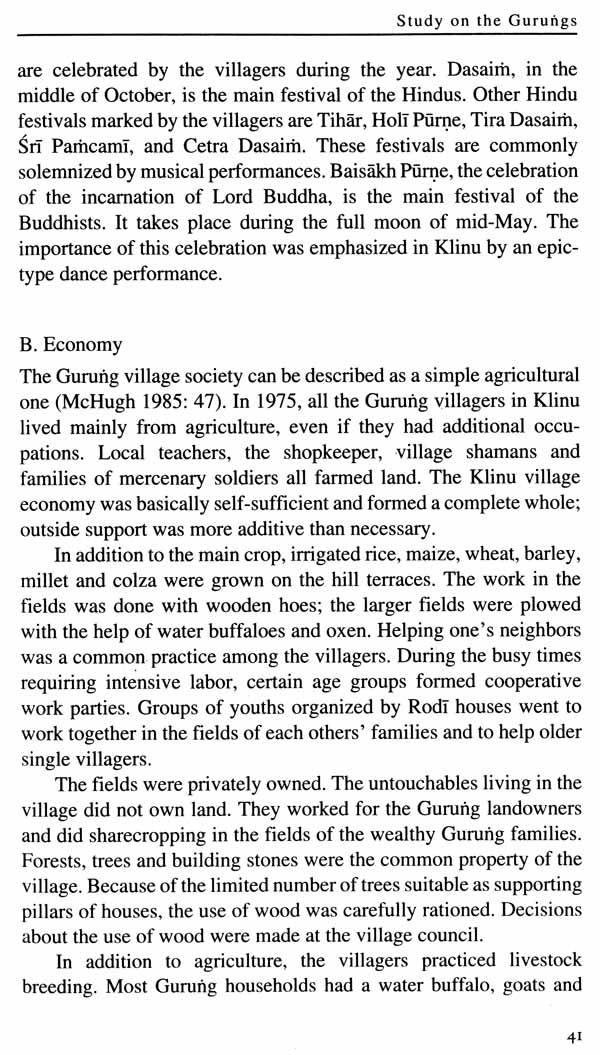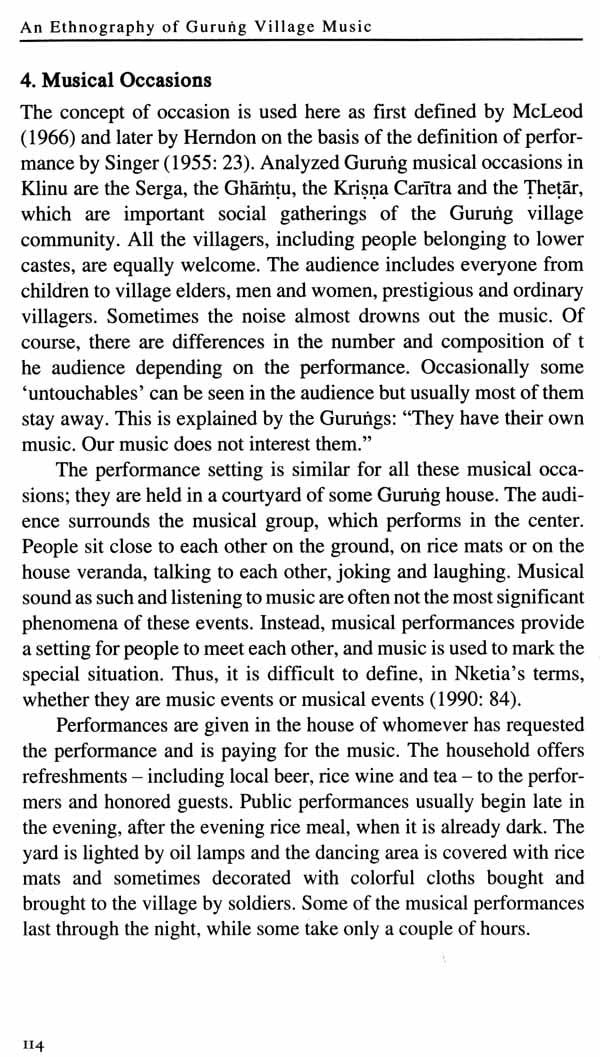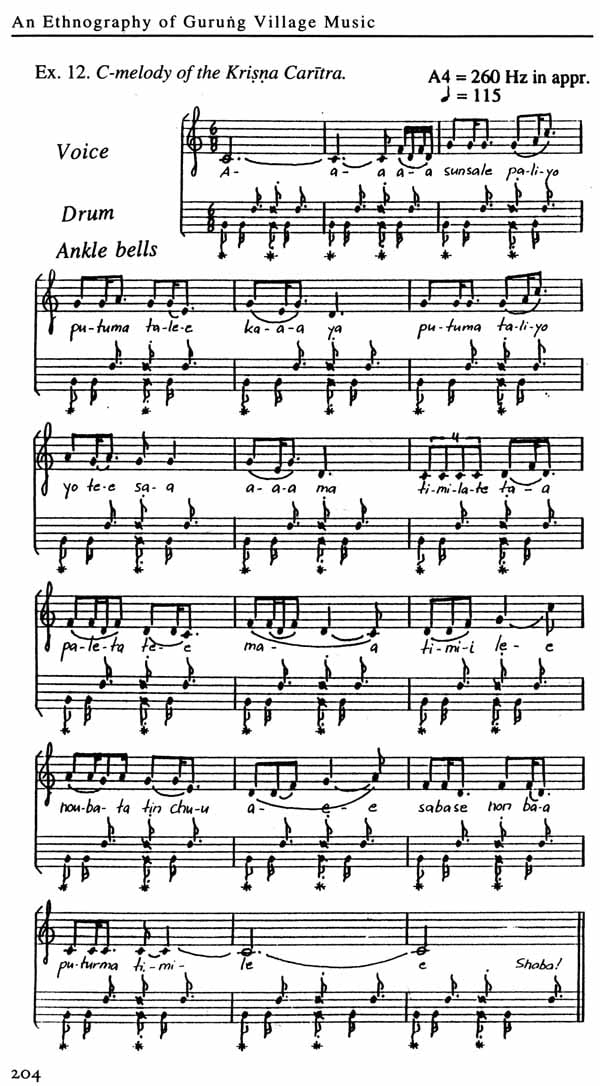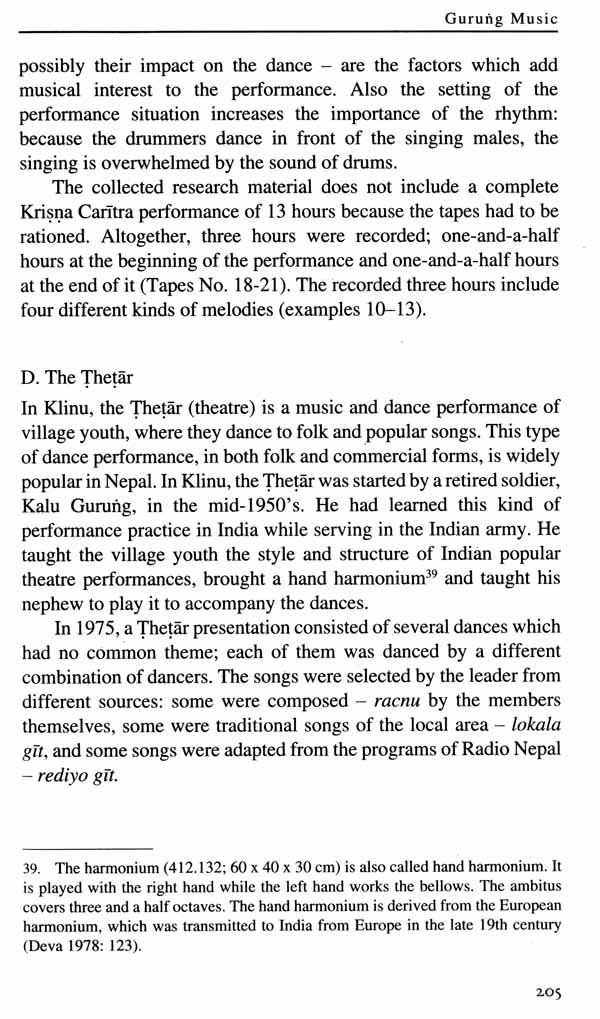| I. POINTS OF DEPARTURE |
1 |
| 1 Ethno-musicology |
1 |
| 2 Ethnography |
5 |
| 3 Cultural Premises |
8 |
| II. STUDY ON THE GURUNGS |
11 |
| 1. The Gurungs |
11 |
| A. Belief System |
13 |
| B. Economy |
15 |
| C. Society System |
16 |
| D. Life According to Gender |
19 |
| 2 Nation-building as the Cultural Context |
23 |
| 3 Fieldwork |
28 |
| 4 Klinu Village in 1975-76 |
38 |
| A. Belief System |
39 |
| B. Economy |
41 |
| C. Outside Contacts |
42 |
| D. Social System |
44 |
| E. Education |
46 |
| F. Yearly Cycle |
47 |
| 5. Tendencies toward Change: Klinu in 1985 |
48 |
| A. Belief System |
50 |
| B. Social System |
51 |
| C. Economy |
52 |
| D.Education |
54 |
| 6. Gurung Cognitive Premises |
56 |
| A. Gurung Ontology |
57 |
| B. Conceptualization of Time |
60 |
| C. Collective Emphasis |
63 |
| D.Ethnic and Cultural Identity |
65 |
| Ill. GURUNG MUSIC |
71 |
| 1. Village Music: 1975-76 |
71 |
| A. Music-makers and Learning |
73 |
| B. Music in the Rites after Death |
80 |
| C. Music of Other Castes |
89 |
| D. The Yearly Cycle of Music |
91 |
| 2. Musical Thinking |
93 |
| A. Classification of Music |
93 |
| B. Conceptualization of Music |
98 |
| 3. Musical Events |
105 |
| A. The Rod! |
106 |
| B. Song Duel |
111 |
| 4. Musical Occasions |
114 |
| A. The Serga |
115 |
| B. The Ghamtu |
127 |
| C. The Krisna Caritra. |
187 |
| D. The Thetar |
205 |
| 5. Continuity and Change: Village Music in 1985 |
215 |
| A. Changes in the Ghamtu |
218 |
| B. Celebration of the Baisakh Purne |
223 |
| C. Music of the Youth |
227 |
| D. Attitudes towards Music |
230 |
| 6. Urban Gurung Music |
232 |
| A. Urban Musicians |
240 |
| B. Rural-urban Transmission |
243 |
| IV. CONCLUSIONS |
247 |
| 1 Gurung Cultural Premises and Music |
247 |
| 2 Parallelism of Cultural Premises and Music |
252 |
| 3 Quality of Change |
265 |
| Bibliography |
269 |
| Index |
283 |












